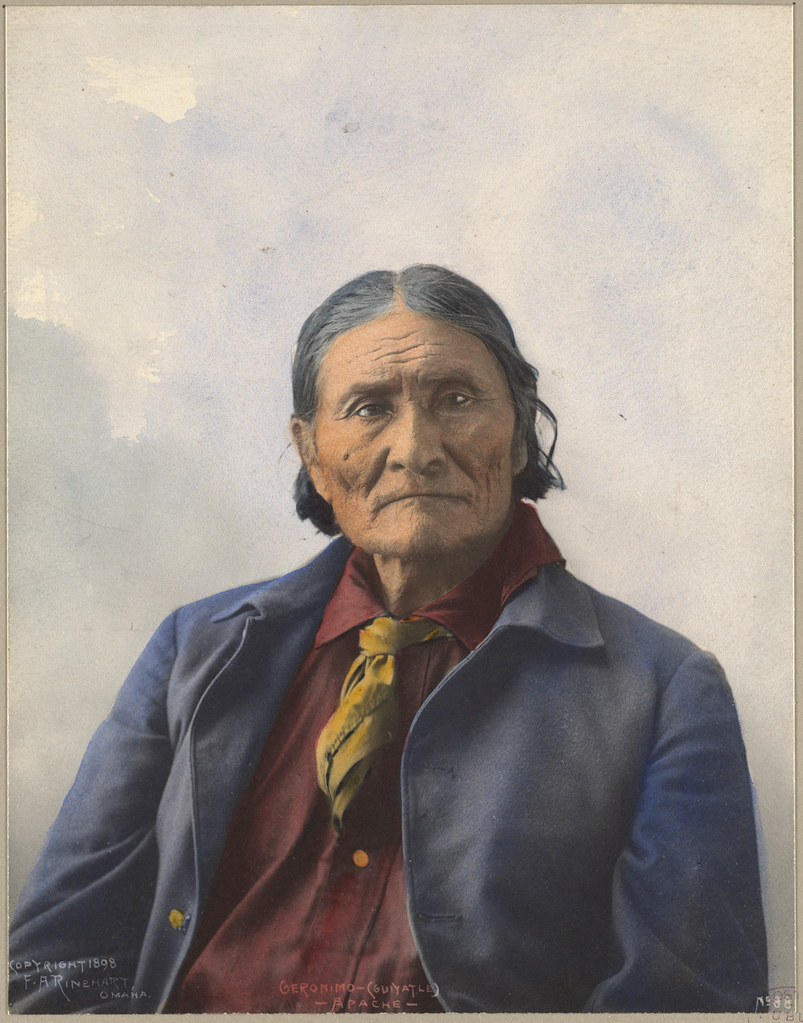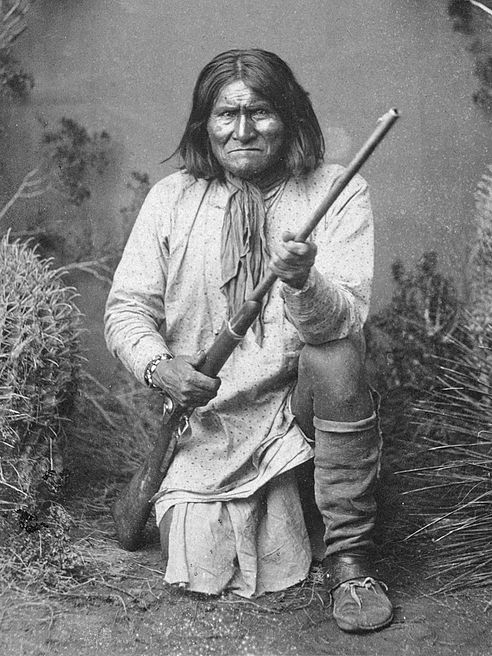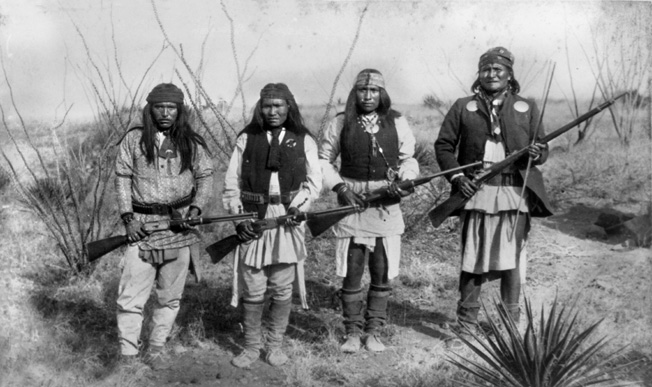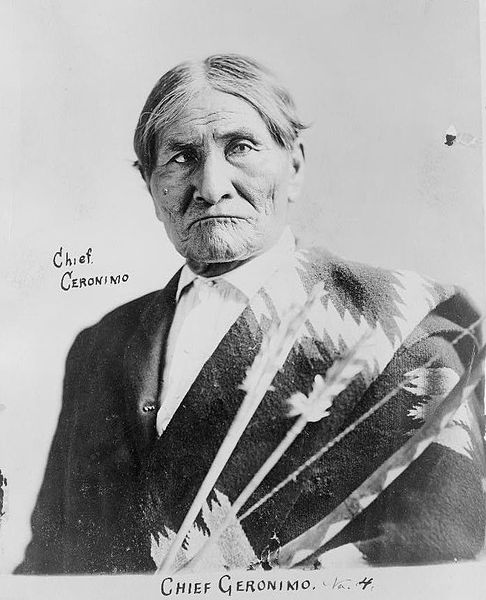
Geronimo (Guiyatle), Apache: photo by Frank A. Rinehart, 1898 (Boston Public Library)
The longest continuous run
of external resistance:
the Apache Wars.
Without significant intermission
from the Seventeenth Century onward
can only be attributed to
the superiority of Native
over Alien Thinking.
Yet they had not invented Mind
and as we know
their domain was by Mind over-ridden
In all the treaties
the Native assented
........................to the Thinking
And never, and
have not yet discovered
the Predictive Mind.
-- Edward Dorn: The Whole European Distinction, from Recollections of Gran Apacheria, 1974

Geronimo (Goyaalé,"one who yawns", born Gila River Arizona, 16 June 1829, died Fort Sill, Oklahoma, 17 February 1909): "This portrait of the historical old Apache was made in March, 1905. According to Geronimo's calculation he was at the time seventy-six years of age, thus making the year of his birth 1829. The picture was taken at Carlisle, Pennsylvania, the day before the inauguration of President Roosevelt, Geronimo being one of the warriors who took part in the inaugural parade at Washington. He appreciated the honor of being one of those chosen for this occasion, and the catching of his features while the old warrior was in a retrospective mood was most fortunate": description and photo by Edward S. Curtis (1868-1952), from Curtis: The Apache, the Jicarillas, the Navaho, 1907 (Northwestern University Library/Library of Congress)

Geronimo, head chief of the Chiricahua Apaches, identified in 1887 newspaper photo caption as "now on the war path in Sierra Madres": here seen in studio portrait, holding a rifle and wearing boot moccasins, a breechcloth, and scarves around his neck. (From photographer's notes: "Genuine age 50 to 55. Rather polite fellow, thought cunning, far seeing. Perfect photo for newspaper in every respect. Three squaws -- most cow cunning on reservation, small squint eyes = looked sideways, spoke Spanish): photo by A.T. Willcox, July 1885 (U.S. Department of Defense/Department of the Army/Office of the Chief Signal Office/National Archive)

Chiricahua Apache chief Geronimo (right) and a small group of his warriors: photographer unknown, 1886 (Arizona Historical Society)

Scene in Geronimo's camp, before surrender to General Crook, 27 March 1886: Geronimo and Natches mounted, Geronimo's son, Perico, standing at his side holding baby: photo by A.S. Fly, 1886 (Library of Congress)

Six tribal leaders: (left to right) Little Plume (Piegan), Buckskin Charley (Ute), Geronimo (Chiricahua Apache), Quanah Parker (Comanche), Hollow Horn Bear (Brulé Sioux), and American Horse (Oglala Sioux) on horseback in ceremonial attire: photo by Edward S. Curtis (1868-1952), c. 1900 (Library of Congress)

Indian chiefs, headed by Geronimo, passing in review before president Theodore Roosevelt at his inauguration, Washington, 4 March 1905: photo by Keystone View Company, 1905 (Library of Congress)
Chief Geronimo, Apache leader, holding bow and arrows: photographer unknown, c. 1904 (Library of Congress)

Chiricahua Apache Chief Geronimo at Pan-American Exposition, Buffalo, New York: photo by Charles G. Dudley, 1901 (Library of Congress)
Eyes like two bits of obsidian
With a light between them
-- Edward Dorn: from Geronimo, in Recollections of Gran Apacheria, 1974
